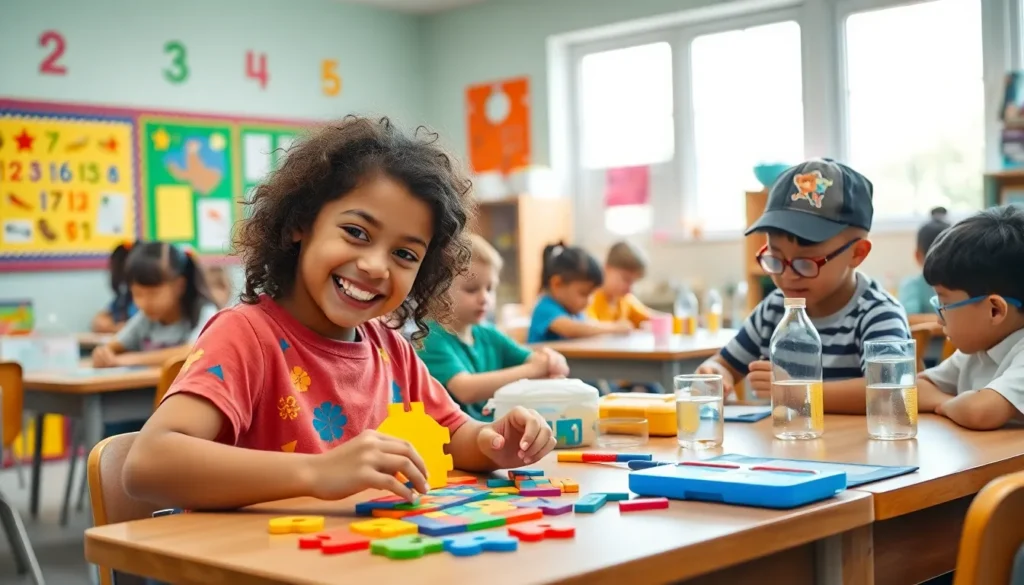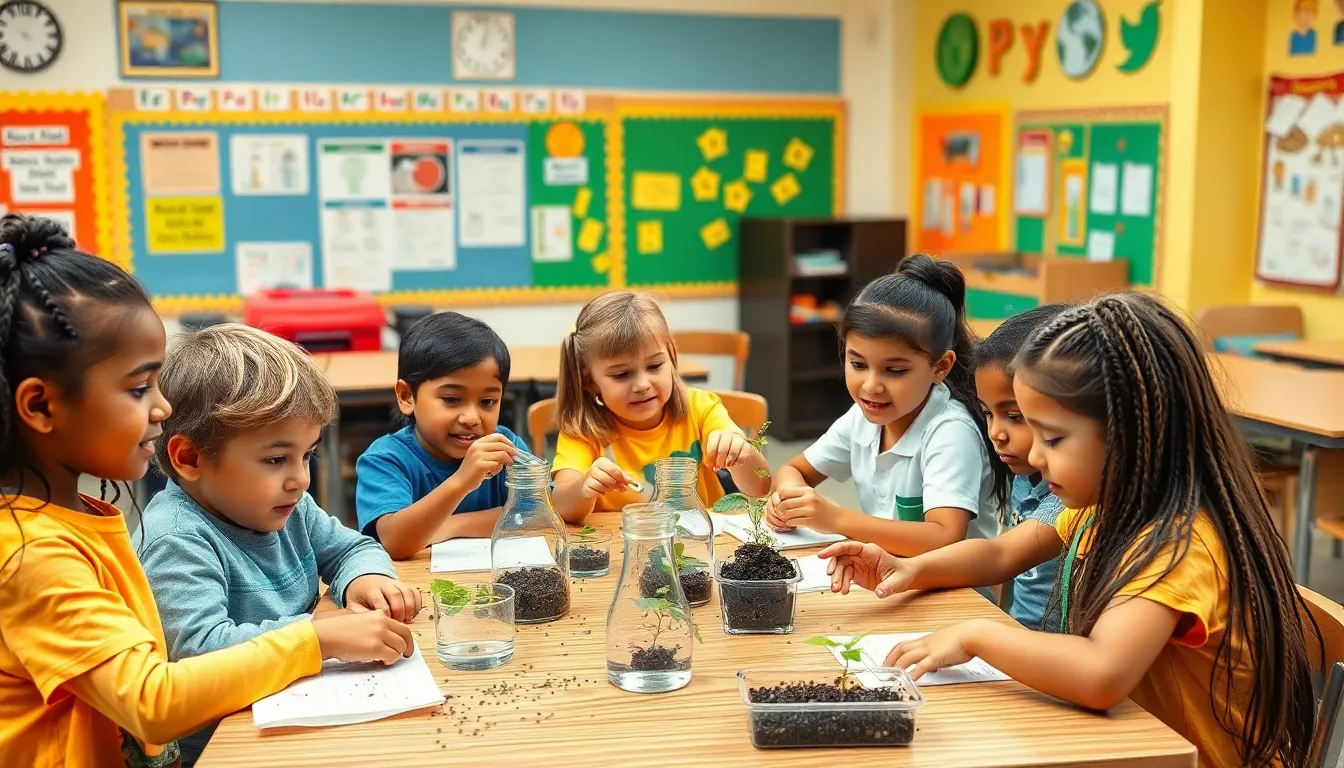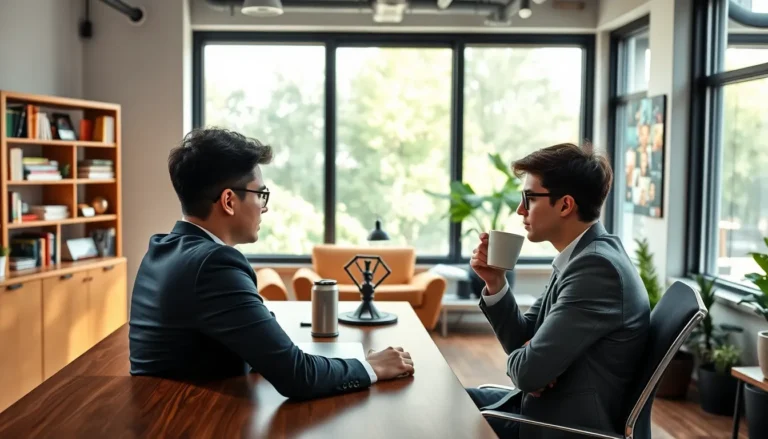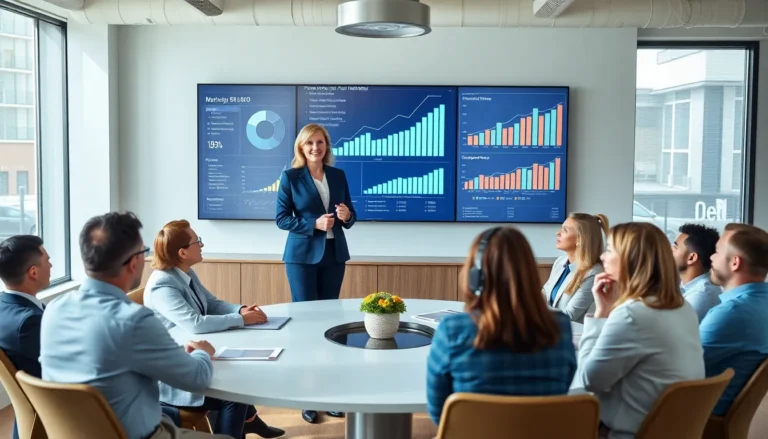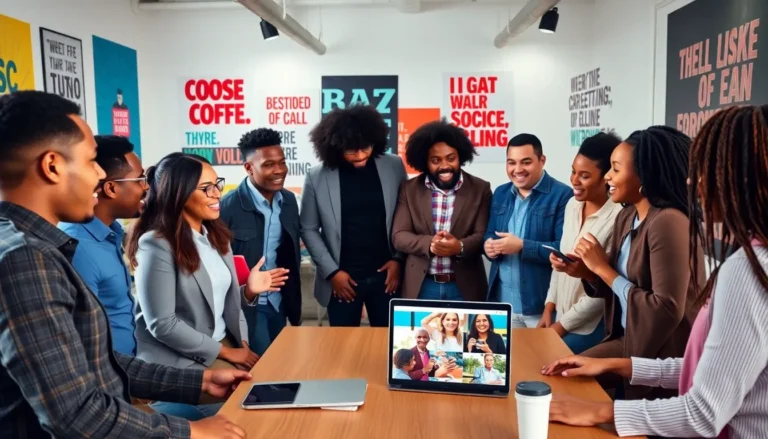Second grade is a magical time when kids dive headfirst into a world of learning, curiosity, and the occasional mischief. It’s the stage where they transform from wide-eyed kindergartners into confident little scholars, ready to tackle everything from basic math to the mysteries of the universe—well, sort of. With a curriculum designed to spark creativity and critical thinking, second graders are in for an adventure that makes learning feel like playtime.
Imagine a classroom buzzing with excitement as students explore reading, writing, and arithmetic, all while mastering the art of social skills and teamwork. This year, they won’t just learn; they’ll embark on epic quests through stories, conquer math challenges, and discover the wonders of science. Buckle up, because the second grade curriculum is not just educational—it’s an exhilarating ride that sets the stage for lifelong learning and laughter.
Table of Contents
ToggleOverview of Second Grade Curriculum
Second grade introduces a cohesive academic structure that builds on foundational skills acquired in earlier grades. Language arts plays a vital role, focusing on enhancing reading comprehension and writing abilities. Students encounter various genres such as fiction and nonfiction, which expand their understanding of different contexts and themes.
Mathematics becomes more engaging with the introduction of addition and subtraction of two-digit numbers. They explore basic concepts of time, measurement, and geometry. Problem-solving strategies emphasize teamwork and individual reasoning, equipping learners with essential mathematical tools.
Science education focuses on exploration and observation. Students learn about life cycles, ecosystems, and simple physical science concepts. Hands-on experiments foster curiosity, allowing students to ask questions and seek answers through active participation.
Social studies broadens their perspective on communities and cultures. Learners investigate historical events, geography, and civic responsibilities. Interactive projects help students connect with their peers and understand the importance of teamwork and diversity.
In addition to core subjects, arts and physical education contribute to a well-rounded curriculum. Creative expression flourishes through visual arts, music, and drama. Physical education emphasizes the value of health and fitness, promoting teamwork and personal growth.
Supporting all these subjects, social-emotional learning encourages students to develop stronger interpersonal skills. Lessons focus on empathy, conflict resolution, and self-regulation, preparing children for collaborative interactions both inside and outside the classroom.
This comprehensive curriculum not only nurtures academic skills but also fosters a love for learning that can last a lifetime.
Core Subjects in Second Grade
Second grade introduces critical subjects that build on earlier learning experiences. Students engage in language arts, mathematics, science, and social studies, all essential for their academic growth.
Language Arts
Language arts focuses on improving reading comprehension and writing skills. Students read various genres like fiction, nonfiction, and poetry, which enhances their understanding of different text structures. Writing exercises include crafting narratives, opinion pieces, and informative texts, encouraging creativity and clarity. Phonics and vocabulary development remain crucial, helping children decode words and express themselves effectively.
Mathematics
Mathematics in second grade covers foundational concepts, including two-digit addition and subtraction. Students explore various strategies, such as regrouping and number lines, to solve problems efficiently. Measurement and geometry also feature prominently in the curriculum, introducing concepts like length, area, and the identification of shapes. Engaging math games and real-world scenarios foster a meaningful understanding of numbers and their applications.
Science
Science education promotes hands-on exploration and inquiry. Students study life cycles and ecosystems, examining how organisms interact within environments. Basic physical science concepts are introduced, providing insights into matter and energy. Through engaging experiments, children develop their observational skills and curiosity about the natural world.
Social Studies
Social studies broadens students’ understanding of communities and cultures. Historical events and civic responsibilities are examined through interactive lessons and projects. Students learn about map skills, geography, and traditions from different cultures, fostering respect and appreciation for diversity. Engaging discussions about community roles help children connect their learning to their lives.
Teaching Methods and Strategies
Teaching methods and strategies in second grade focus on fostering engagement and understanding among students. Educators apply various approaches to enhance learning experiences.
Differentiated Instruction
Differentiated instruction tailors teaching techniques to meet diverse student needs. Teachers assess each child’s learning style, readiness level, and interests. Instructional strategies include modified assignments, flexible grouping, and varied teaching materials. For instance, students may work in small groups on reading fluency or engage in independent writing projects. Personalized learning plans support students who require additional challenges or extra assistance. Teachers encourage autonomy while providing targeted guidance. With these methods, the curriculum becomes accessible and effective for all learners.
Hands-On Learning Activities
Hands-on learning activities actively engage students in the educational process. Practical tasks such as science experiments, art projects, and math manipulatives promote exploration. For example, conducting simple experiments in ecosystems helps reinforce science concepts. Art activities, including crafts or painting, encourage creative expression and enhance fine motor skills. Students engage more deeply when using tangible materials to solve problems or complete projects. Collaborative tasks foster teamwork and communication skills as students work together on shared goals. Such dynamic activities solidify understanding and make learning enjoyable.
Assessments and Evaluations
Second-grade assessments and evaluations play a significant role in monitoring student progress and understanding. Standardized tests often assess reading comprehension and math skills, providing educators with measurable data. Formative assessments, like quizzes and classroom observations, allow teachers to gauge students’ grasp of concepts in real time.
Teachers frequently utilize rubrics during writing assignments to evaluate creativity and adherence to writing conventions. Collaborating with students, educators might set clear expectations and discuss areas for improvement. These assessments encourage students to self-reflect on their learning journey, fostering a growth mindset.
Additionally, projects and presentations assess students’ understanding of social studies topics. Interactive evaluations, such as group projects, enhance collaborative skills and reinforce knowledge retention. Science experiments also serve as practical assessments, where students showcase their understanding of the scientific method and concepts.
Parent-teacher conferences provide opportunities to discuss assessment outcomes with families. Sharing specific examples of student work highlights strengths and identifies areas for growth. Consistent communication ensures parents stay informed of their child’s academic journey, reinforcing the partnership between home and school.
Data collected through these evaluations inform instructional decisions, allowing educators to tailor lessons. Adjusting teaching strategies based on assessment results meets diverse student needs and supports mastery of the curriculum. This continuous feedback loop fosters an environment where students thrive academically and emotionally.
Conclusion
Second grade serves as a pivotal year in a child’s educational journey. The engaging curriculum not only enhances academic skills but also nurtures creativity and social-emotional growth. Through diverse subjects and hands-on activities, students develop a solid foundation for future learning.
Teachers play a crucial role in this transformation by employing effective strategies that cater to individual learning styles. Assessments provide valuable insights into student progress, ensuring that each child receives the support they need to thrive.
As second graders embark on this exciting adventure, they cultivate a lifelong love for learning that will benefit them for years to come.

